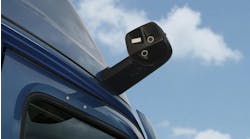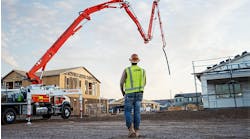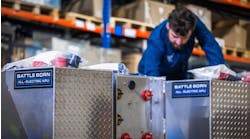Rising maintenance costs: How fleets can keep their bottom line in check
In the past 12 months, fleet executives have seen a surge in maintenance costs, according to the recently released GE Capital Fleet Market Economic Outlook Survey. And a lot of that is due to the upkeep of older vehicles, unscheduled repairs and preventative service, the survey says.
Steve Jastrow, a strategic consulting manager for GE Capital Fleet Services, said knowing when it’s time for a new vehicle could help control those high costs.
“Making sure that you’re identifying the opportune time to be cycling vehicles is really important,” he told Fleet Owner. “Unscheduled maintenance events for older vehicles leads to downtime and repairs that become more expensive.”
Jastrow noted that newer vehicles also have improved fuel efficiency, which helps keep those costs in line.
Another key finding of the survey is many fleets strive to reduce fuel usage and expenses. And fleet executives report that fluctuating fuel prices are a top concern.
“Fleets will get improved fuel economy with newer vehicles,” Jastrow said. “Not only does it help on the fuel-expense side, it helps on the CO2 side as well. It is a much greener option for fleets to deploy that strategy.”
Another benefit of newer vehicles, Jastrow added, is the safety factor – which is a top objective for fleet managers, according to the survey. Many new vehicles include backup cameras, which Jastrow said will be mandated in the next year or so for medium-duty vehicles.
The hidden maintenance costs that do not show up in surveys
Darry Stuart, president and CEO of Fleet Management Services, agrees that costs have increased tremendously in the past few years, but he says it is driven mostly by emissions regulations and rising dealership fees.
“Even though some of the trucks are getting older, fleets have been forced to keep trucks a little longer,” Stuart said. “So, certainly, there would be an increase. But there has been a tremendous increase in parts and dealership labor, and there has since been a reduction in warranty payments.”
He noted that some of the major costs coming into play from a maintenance perspective have been diagnostic costs at the dealerships.
“General costs have risen,” he said. “Labor costs have gone up. Triage charges and flat-rate charges have gone up. It’s become a little more complicated. On the older stuff, I think if you really dissect the numbers and look at it closely, some of the older trucks – excluding emissions and the engine areas – the costs are probably somewhat the same.”
When it comes to keeping maintenance costs in check, Stuart offers the following suggestions:
-
Enhance preventative maintenance practices.
-
Manage the budget, but don’t manage to the budget. What Stuart means here is that maintenance managers often back themselves into the budget, he said. Cutting corners becomes problematic, he said, because not fixing a vehicle due to budget constraints will eventually catch up to fleets.
-
Don’t over-maintain vehicles. It’s a waste of money, Stuart says.
“Today, maintaining and managing vehicles to be the low-cost provider is an art and a science,” Stuart said. “There are still many opportunities to get better at what we do. Whatever we did yesterday is not good enough for today.”
“Long before the costs hit the reports, they’re right in front of your face if you’re looking,” he added.
GE began its survey after the financial crisis as a way to take a pulse on the middle market, Jastrow said. GE, which provides financing for the commercial trucking industry, uses the survey results to better gauge what fleet managers are thinking about from a business perspective. The company serves for-hire fleets and owner/operators, leasing companies, and vocational/medium-duty operators and dealers.
This time around, GE Capital surveyed 427 executives with responsibility for vehicle fleets across various industries – including trucking and automotive – to obtain their outlook on various economic, industry and business-level issues.
4 steps to controlling costs
Based on the survey results and his 15 years of experience working in fleet services, Jastrow offers fleet executives the tips on how to maintain costs across the board:
-
Having an optimal vehicle replacement strategy is very important, he said.
-
Enforcing a safety policy/environment for drivers. From a technological standpoint, Jastrow said it is important to ensure fleets are ordering vehicles with after-market installs that improve driver safety – from speed limiters, to crash avoidance technology, or telematics. And running driver motor vehicle record checks.
-
Including driver education programs that focus on what drivers’ behaviors can do to impact fuel usage. He said educating drivers to not speed, which has a ripple effect on fuel and accident safety, and not to idle their vehicles will have a big impact on fleet expenses.
-
Partnering with a fleet management company to monitor accident and maintenance spending.
Key findings from the survey include:
-
Just under half of middle-market executives with fleet responsibility expect fleet costs to continue to rise, driven by maintenance expenses, fuel costs and vehicle acquisition/depreciation.
-
Reducing fuel usage and maintenance expenses are seen as the greatest areas of opportunity.
-
Staffing is a challenge at these firms. Increasing competition and government rules and regulations pose a challenge for these businesses.
-
The majority of executives with fleet responsibility have plans to add alternative fuel vehicle, but fewer than 5% have them in their fleet.



